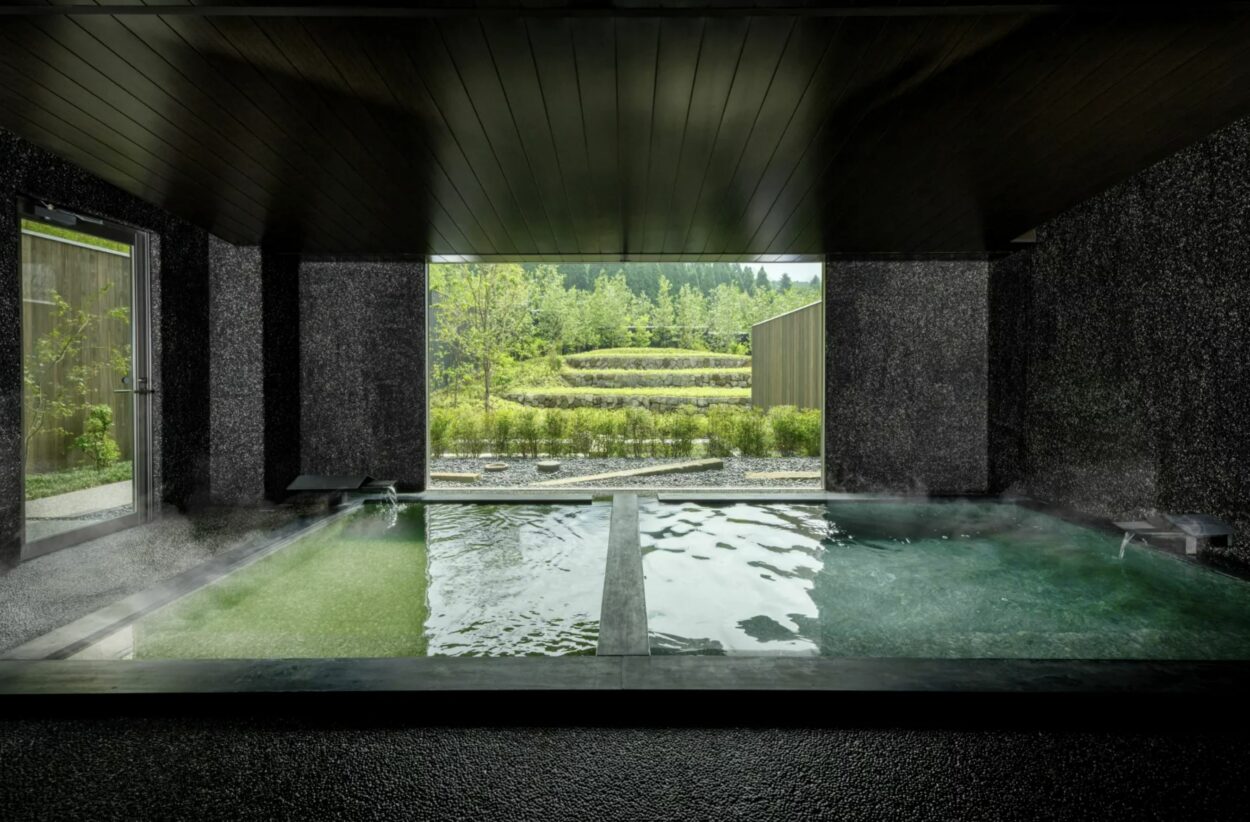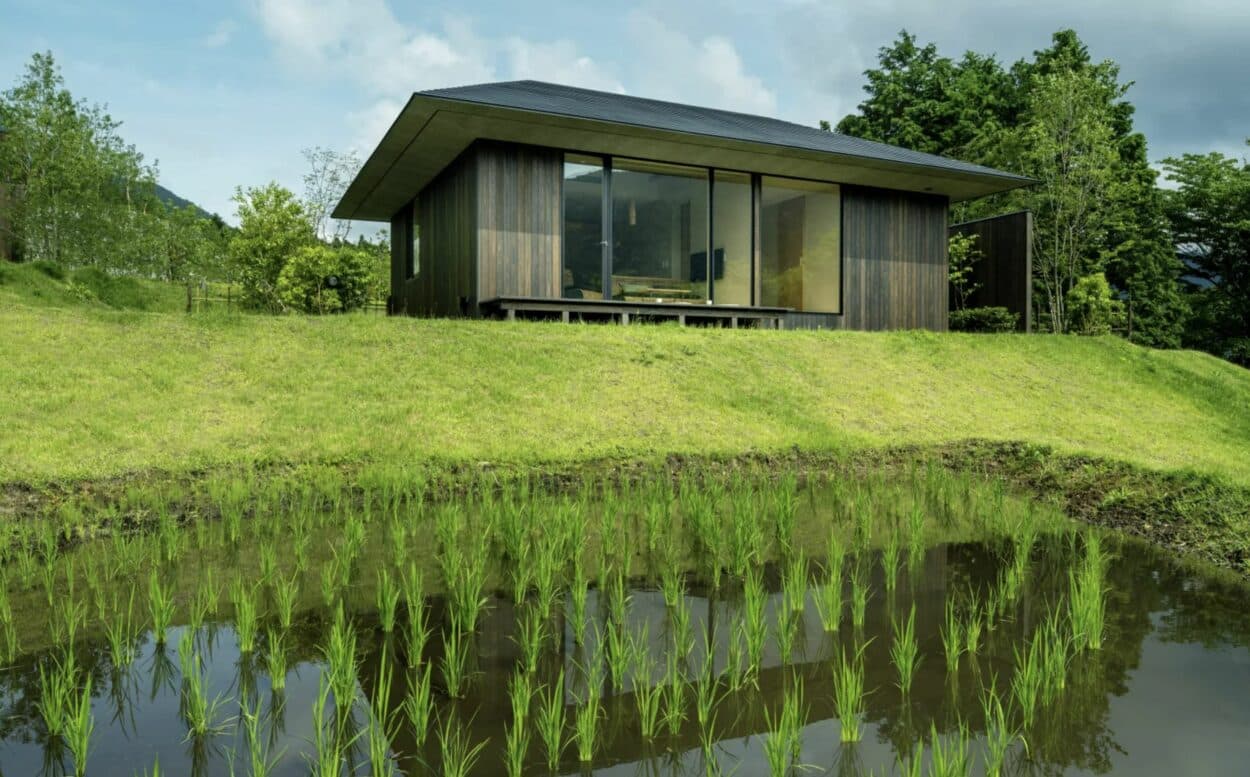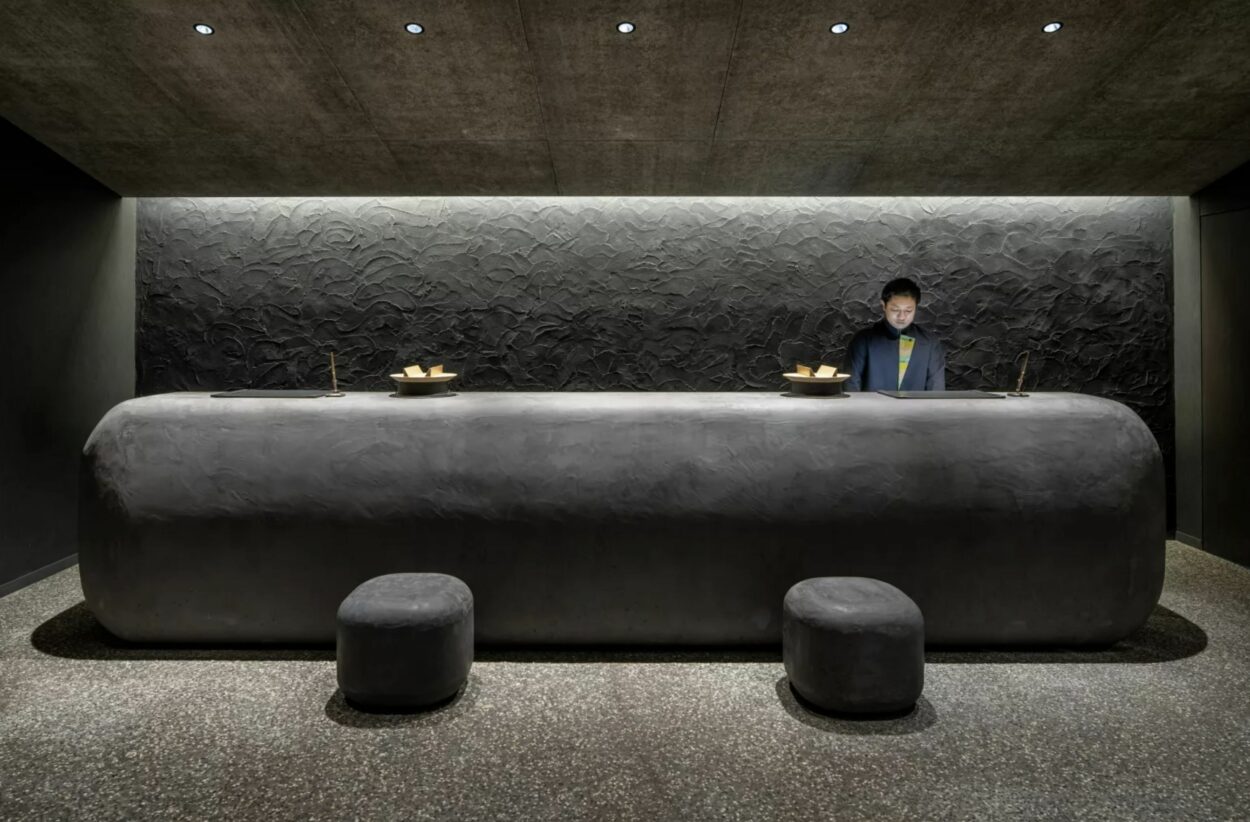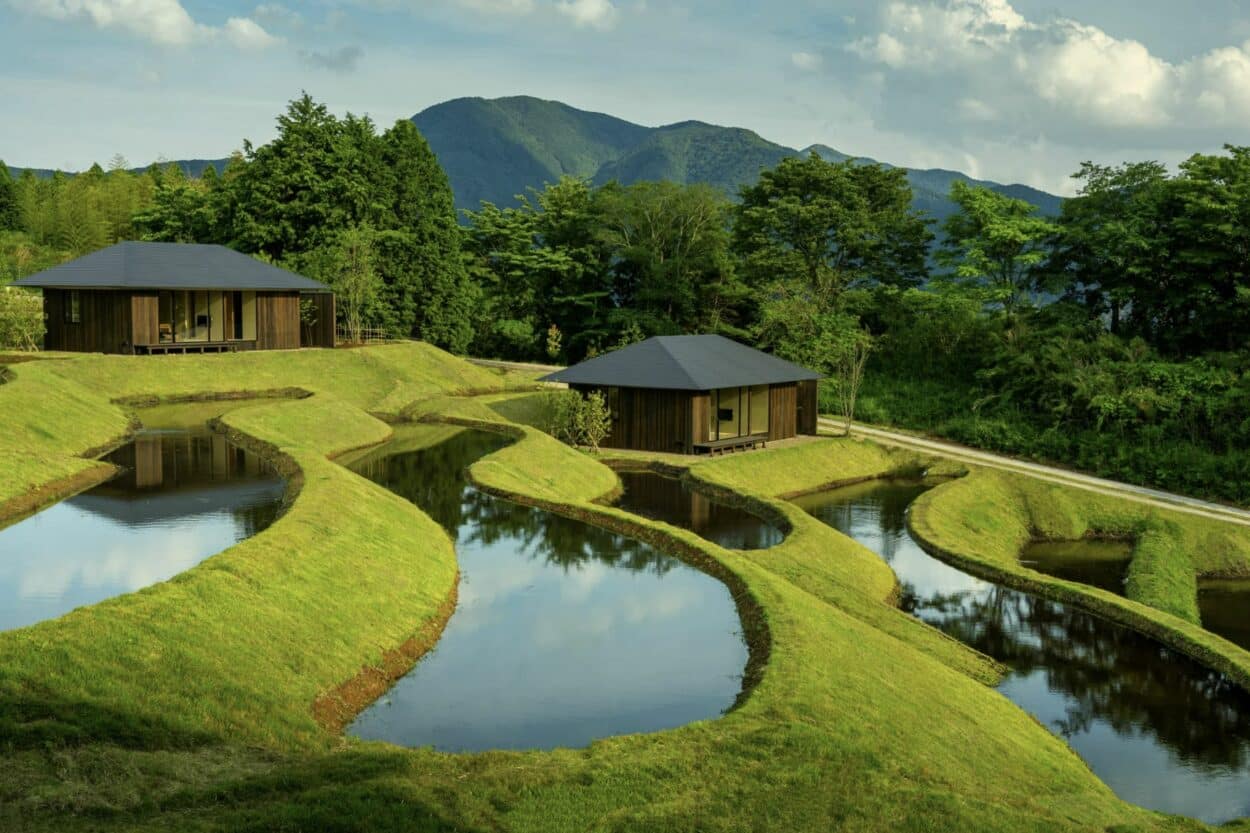Hoshino Resort Co., Ltd. excels beyond the architecture and design of a hotel in order to connect tradition with environmental thinking and modern-day lifestyles. Last year, the company opened its new hotel KAI Yufuin, designed by Kengo Kuma and located on the island of Kyushu in the Ōita Prefecture.
The story begins in 1904 when Kuniji Hoshino founded a forestry business in Karuizawa where, ten years later, he opened the first Hoshino Onsen Ryokan (hot spring inn). The family brand has evolved into a highly influential hotel management company, now led by 4th-generation family member Yoshiharu Hoshino. Since 2001, the company has expanded out of Karuizawa, operating more than 40 accommodations both in and outside Japan with several brands under its wings: HOSHINOYA, the luxury hotel brand; KAI, the hot spring ryokan brand; RISONARE, the countryside resort hotel brand; OMO, the city tourism hotel brand; BEB, the free-spirited hotel brand; and other unique lodgings.
In 2022, National Geographic Traveller (UK) selected KAI Poroto for best design in its annual hotel award. Following this esteemed recognition, Travel + Leisure selected KAI Yufuin for its “It List 2023”, an annual award for the best new hotels in the world, after its opening in 2022. Additionally, Conde Nast Traveler chose HOSHINOYA Kyoto for its Gold List 2023. This is the fourth time the hotel has won the award, following 2015, 2016 and 2017, and it is the only accommodation selected from Japan.
What sets hotels from this company apart from others?

Energy In My Yard, Zero Emissions and Ecotourism
Often ahead of the trends, the company established a policy to promote energy self-sufficiency in 1929 when it opened its first hydroelectric power plant. While the hydropower used the power of the river flow on the property to supply electricity, the hotel depended on fossil fuels for heaters and hot water. The energy self-sufficiency rate of the resort stayed at 20% for years. Since the late 1980s, the company has aimed to become a master of the resort business by implementing an eco-friendly program.
They made improvements in the heating technology at the Hoshino Resort, optimizing the geological features in Karuizawa. Based on thorough research of year-round heat demand, the company designed a geothermal heating system that is efficient even if the demand varies significantly by season, and is meant to put the resort at an energy self-sufficiency rate of 75%.
“At Hoshino Resorts, we have a tradition of building our resorts from elements indigenous to their remote locations. By doing so, we have been able to subtly communicate the charms of these specific locations to our guests, bringing them to an understanding of why we built the resort there in the first place. This gives guests the feeling that the long journey they made to stay with us was worthwhile,” Yoshiharu Hoshino, CEO of Hoshino Resorts, stated in a press release.
Today, the company’s environmentally friendly management program has three elements: EIMY (Energy In My Yard), “Zero Emissions,” and Ecotourism, which offers participants enjoyable activities in nature. The company-wide Zero Emission project started in December 1999, with the aim of reducing to zero waste to be incinerated or dumped in landfills. It took quite some time, however, before they managed to reach a recycling rate of 74%. The Hoshino Resort later won Japan’s Environmental Minister’s Award in the hotel and inn category in the sixth Green Purchasing Awards.
Ecotourism emphasizes the charm and value of local nature and the ecosystem by using various research studies as well as offering them opportunities to enjoy nature while preserving local nature and ensuring harmonious coexistence with wild animals and plants.




It List 2023: KAI Yufuin, Designed by Kengo Kuma
In August 2022, Hoshino Resorts opened its Yufuin resort under the hot spring ryokan brand, KAI. Designed by Kengo Kuma, a celebrated Japanese architect, KAI Yufuin is a hot spring ryokan with a sculpted landscape painted with nature’s brush, where the cascading rice terraces with Mount Yufu as a dramatic backdrop can be captured. Rice terraces, one of Yufuin’s original landscapes, are recreated in the center of the premise.
KAI Yufuin has six signature room types, details of which include a ceiling light that was inspired by firefly baskets which were once used as sources of light by keeping fireflies in straw baskets. The lighting in the room uses rare shichito matgrass which is grown in the Kunisaki Peninsula of Oita Prefecture where the largest amount of giant timber bamboo in Japan is produced. The bamboo is used for the headboards and sofa in the rooms so guests are in close proximity to the traditional crafts and culture of this region.
The lobby floor, made from a mixture of gravel, soil and lime, invokes the traditional dirt floor entrance of an agricultural home; while the spherical shape of the front desk mimics kamado, the traditional farmhouse kitchen stove. Representative of an itama (room with wooden floor), the Travel Library has flooring made of bamboo, as well as lighting fixtures designed by Kuma from washi paper, inspired by the fluttering motions of local butterflies in the fields. Behind the library, the Rice Terrace Deck is a public space that looks out over the rice fields, with wooden flooring and seats composed of aromatic shichitoi (perennial grass) tatami, a material whose production and use are being revitalized in the region.
The vaporous indoor pool of KAI Yufuin’s bathhouse has dark, subdued colors, with black wood-grain panels plus walls and floors made of black pebbles, allowing the views of Mount Yufu. In the semi-private dining area, the walls are made of washi paper designed with local elements such as straw, rice, bamboo and shichitoi grass, once more evoking the aesthetics of a traditional farmhouse. The modest lighting, hanging over each table and made from wrinkled washi paper and thin bamboo sticks, is another Kuma original.
The Kaiseki dinner course incorporates local food culture and is served in a semi-private dining room. The meal makes use of nature’s blessings from the mountains: wild boar meat and shitake mushroom pate sandwiched in monaka wafer is served along with watercress salad with a dressing of kabosu citrus, a signature agricultural product of Oita Prefecture.













